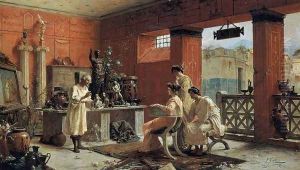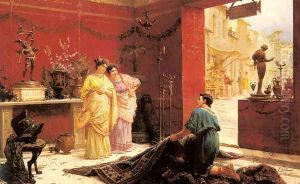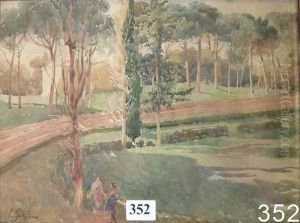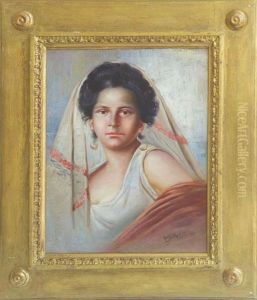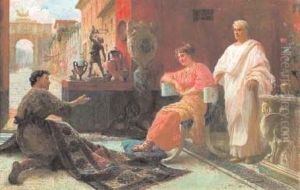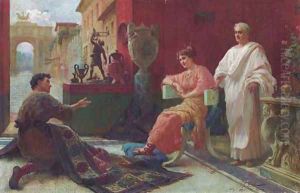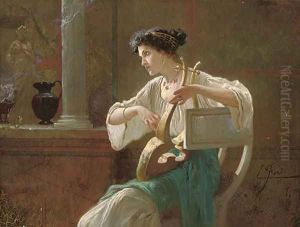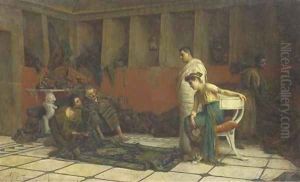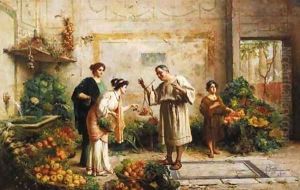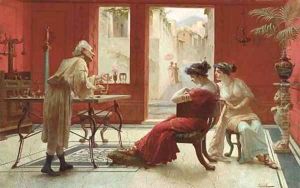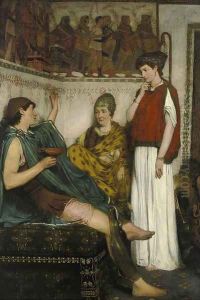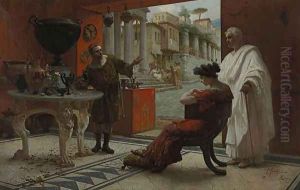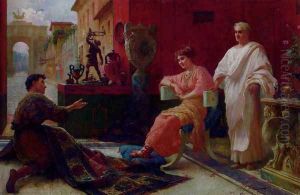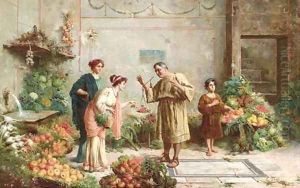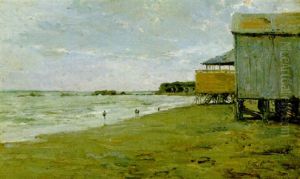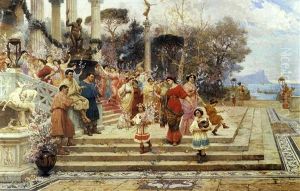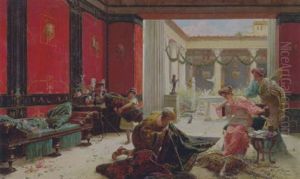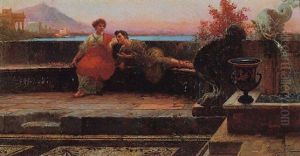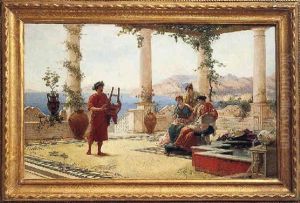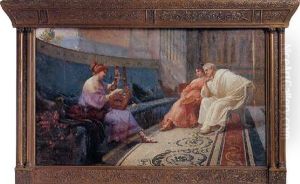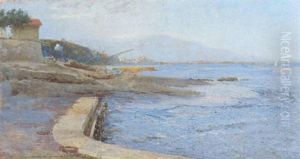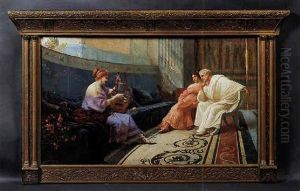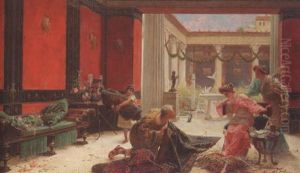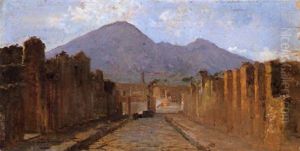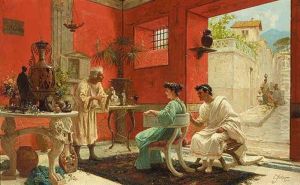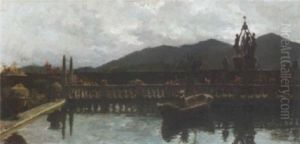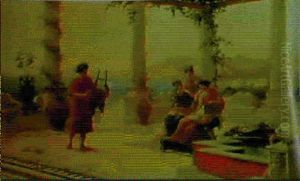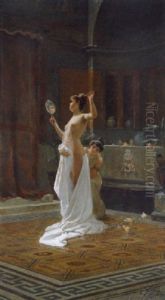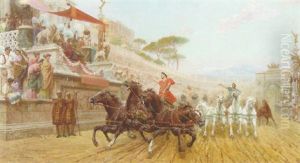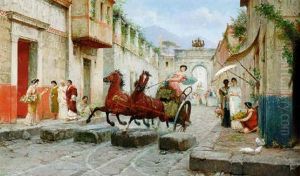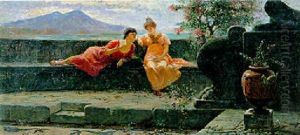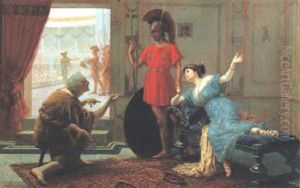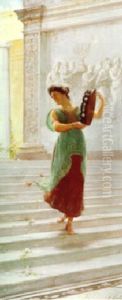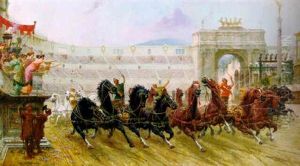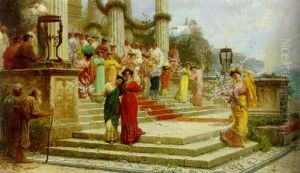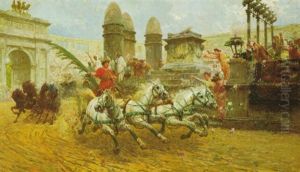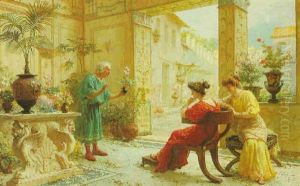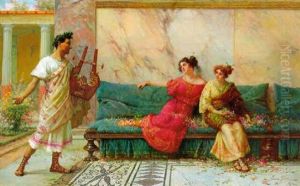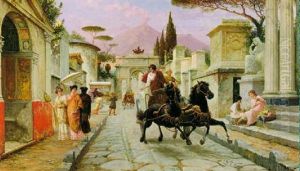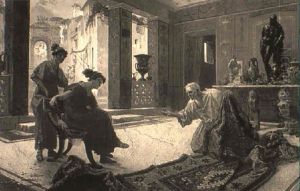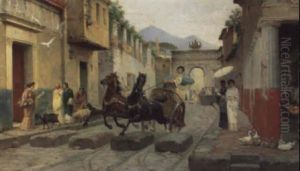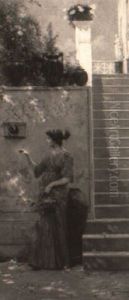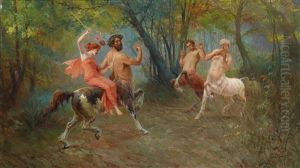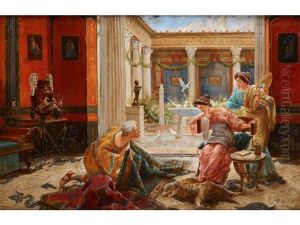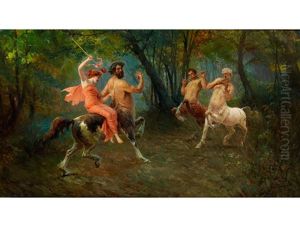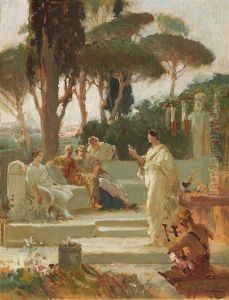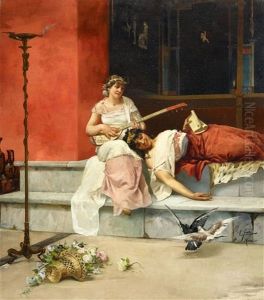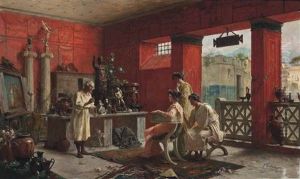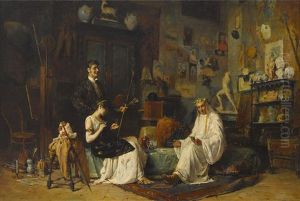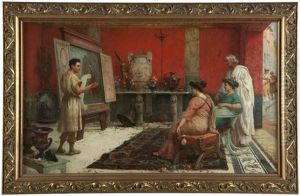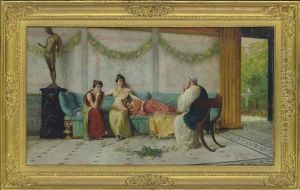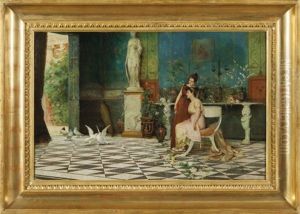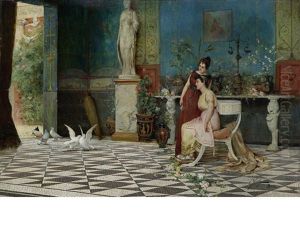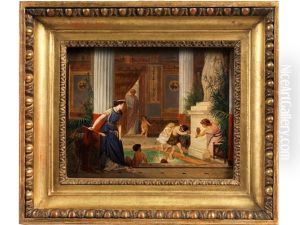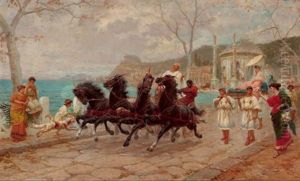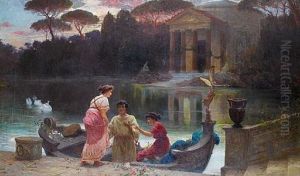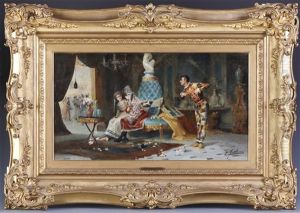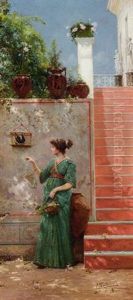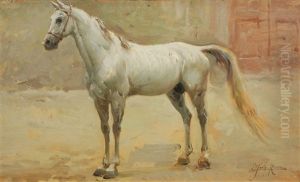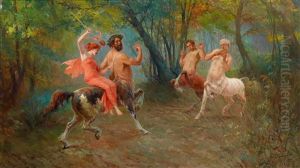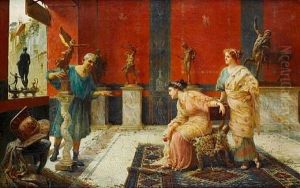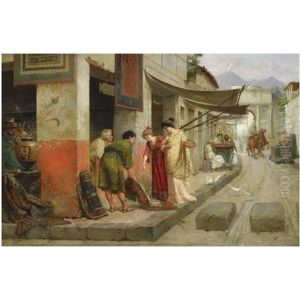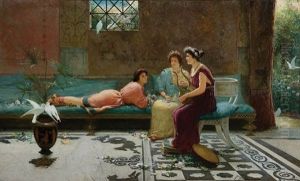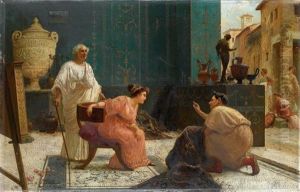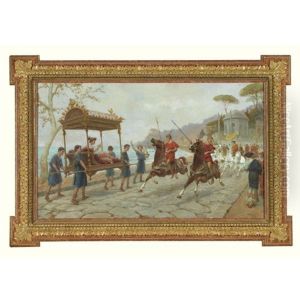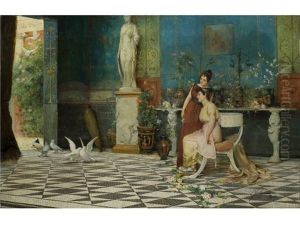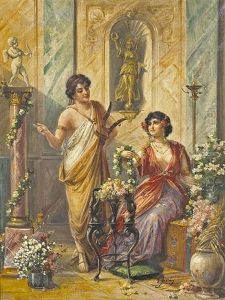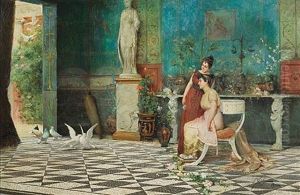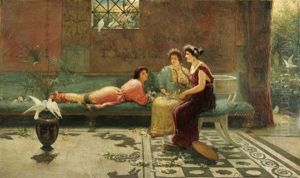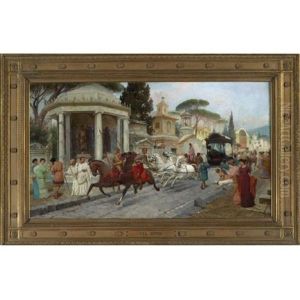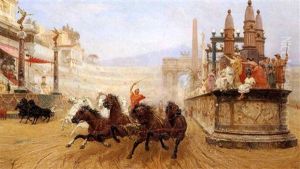Ettore Forti Paintings
Ettore Forti was an Italian artist born in 1864 in Rome, Italy. His artistic career spanned the late 19th and early 20th centuries, a period characterized by significant changes in the arts, including the transition from traditional academic art to modernism. Despite the transformation in the art world around him, Forti remained largely influenced by the classical and historical subjects that were in vogue during his formative years.
Forti specialized in genre painting, particularly scenes of everyday life in ancient Rome, which were popular with both Italian and foreign tourists of the time. His works often depicted Roman market scenes, festivals, and interiors of classical buildings. He had a penchant for capturing the romanticized version of the Italian past, which was in line with the tastes of his clientele who sought nostalgic evocations of Italy's grand history.
Not much is known about Forti's artistic training, but it is likely that he received a traditional education at one of the academies in Rome, which emphasized drawing from life and studying the works of the old masters. His style was characterized by a detailed and realistic approach, with careful attention to the representation of architectural and costume details, which gave his paintings a sense of authenticity and historical accuracy.
During his lifetime, Forti exhibited his work in various venues, including the Società degli Amatori e Cultori di Belle Arti in Rome, an important exhibition space for contemporary artists of the time. Although he was not at the forefront of the avant-garde movements that dominated the art scene in the late 19th and early 20th centuries, his work enjoyed a degree of popularity, particularly among those who favored a more conservative and traditional style.
Ettore Forti's legacy is modest in comparison to the major figures of his era, and as a result, he has not been the subject of extensive scholarly research. His paintings, however, can still be appreciated for their craftsmanship and for providing a window into the romantic vision of antiquity that appealed to viewers of his generation. Forti passed away in 1942, leaving behind a body of work that remains of interest to those studying the genre and historical painting of the period.
